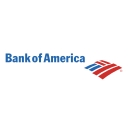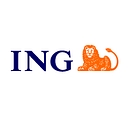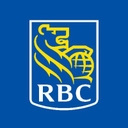
Want to dig deeper on BNP Paribas and thousands of companies?
Rapidly search an extensive universe of public and private content — earnings transcripts, company filings, equity research, trade journals, and more.
Request a Free TrialCompanies by industry
Aerospace & DefenseAutomobile ComponentsAutomobilesBanksBeveragesBiotechnologyBroadline RetailCapital MarketsChemicalsCommunications EquipmentConsumer FinanceConsumer Staples Distribution & RetailContainers & PackagingElectric UtilitiesElectronic Equipment, Instruments & ComponentsEnergy Equipment & ServicesEntertainmentFinancial ServicesFood ProductsGround TransportationHealth Care Equipment & SuppliesHealth Care Providers & ServicesHotels, Restaurants & LeisureHousehold DurablesHousehold ProductsIT ServicesIndustrial ConglomeratesIndustrial REITsInsuranceInteractive Media & ServicesLife Sciences Tools & ServicesMachineryMediaMetals & MiningMulti-UtilitiesOil, Gas & Consumable FuelsPersonal Care ProductsPharmaceuticalsSemiconductors & Semiconductor EquipmentSoftwareSpecialized REITsSpecialty RetailTechnology Hardware, Storage & PeripheralsTextiles, Apparel & Luxury GoodsTobaccoWireless Telecommunication Services
BNP Paribas Earnings - Analysis & Highlights for Q1 2025
Overview
PositivesNegativesOutlook
- Revenue is up 3.8% in Q1 with operating divisions up 6.1% in line with the trajectory set for 2026.
- Wealth management was up nearly 11% on strong fee growth and asset management was up 6%, thanks to good fee growth and good performance of financial investments.
- Global markets activities were up 17.3%, driven by a very strong 42% growth in equity and prime services, and a robust performance for FICC, which was up 4.4% and perfectly driven by macro, particularly foreign exchange.
- The quarter confirmed a gradual inflection at eurozone commercial banks, which are up 1% YoY, and a strong 19% increase at Euro-Med, thanks to a much improved performance in Turkey and Poland.
- The company posted a strong 6.6% growth, particularly driven by wealth management and insurance.
- CET1 is down 50 bps QoQ to 12.4%.
- The company is working hard to improve the divisions, not delivering adequate returns.
- The company is impacted by the valuation of a few items at fair value in Q1.
- The company is impacted by macro impact on certain sectors.
- The company's net profit was down 4.9% without compromising its trajectory of profitability.
- The company expects to reach a return on tangible equity of 11.5% in 2025 and 12% in 2026, leading to more than 7% group net income growth CAGR.
- The company expects to lift the return on notional equity of these businesses to a minimum of 17% by 2028, adding about 1 percentage point to group return on tangible equity.
- The company expects the return on invested capital to be significant at 14% in 2028 and above 20% in 2029.
- The company expects to implement €190 million of new cost savings ahead of the full target of €600 million to offset inflation.
- The company expects to reach a return on tangible equity of 11.5% in 2025 and 12% in 2026, leading to more than 7% group net income growth CAGR.
Q&A Highlights from BNP Paribas Earnings Call Q1 2025
- Analyst asked about the company's strategy for dealing with the EU's Securitization Implementation Unit (SIU) and its potential impact on profitability.
- Lars Machenil explained that the company has observed a change in the approach of the commission, which is now working on tangible solutions to improve capital flow and redeployment at the European level. While the SIU still needs to go through the parliament and council, Machenil believes that it will eventually lead to an improvement in profitability. The company's ambition is to reach 12% by 2026, with potential for an additional 1 point improvement, but this is not a guarantee.
- Lars Machenil explained that the company has observed a change in the approach of the commission, which is now working on tangible solutions to improve capital flow and redeployment at the European level. While the SIU still needs to go through the parliament and council, Machenil believes that it will eventually lead to an improvement in profitability. The company's ambition is to reach 12% by 2026, with potential for an additional 1 point improvement, but this is not a guarantee.
- Analyst asked about the company's ability to sustain its business model in the event of a deflationary monetary policy, such as interest rates going back to 1%.
- JeanLaurent Bonnafé explained that the company's cost base guidance for the year is 2-2.5 points, with a top line of 4% away from external growth. The first quarter results were impacted by high results from Global Markets, Turkey and inflation, as well as the perimeter and currency effects. The company expects to normalize these results by year-end, and potentially even slightly lower than 2.5 percentage points. In terms of the company's ability to sustain its business model in a deflationary environment, Bonnafé stated that the company's diversified model would benefit from such an evolution, with Personal Finance and Arval seeing rapid benefits, as well as Eurozone domestic banks with fixed-term rates for mortgages. The company's business model is more favorable in this scenario compared to other floating rate domestic banks.
- JeanLaurent Bonnafé explained that the company's cost base guidance for the year is 2-2.5 points, with a top line of 4% away from external growth. The first quarter results were impacted by high results from Global Markets, Turkey and inflation, as well as the perimeter and currency effects. The company expects to normalize these results by year-end, and potentially even slightly lower than 2.5 percentage points. In terms of the company's ability to sustain its business model in a deflationary environment, Bonnafé stated that the company's diversified model would benefit from such an evolution, with Personal Finance and Arval seeing rapid benefits, as well as Eurozone domestic banks with fixed-term rates for mortgages. The company's business model is more favorable in this scenario compared to other floating rate domestic banks.
- Analyst asked about the impact of the proposed changes to the SLR in the US on BNP Paribas's CIB business.
- The company's management stated that the proposed changes to the SLR in the US could favor US banks, but it's too early to say. They also mentioned that the global economy is likely to suffer a hit of up to 1 percentage point in the next 12 months, with a large part of the impact expected in the US, emerging countries, and the Eurozone.
- The company's management stated that the proposed changes to the SLR in the US could favor US banks, but it's too early to say. They also mentioned that the global economy is likely to suffer a hit of up to 1 percentage point in the next 12 months, with a large part of the impact expected in the US, emerging countries, and the Eurozone.
- Analyst asked about the return on investment for year four, specifically if it is burdened by the amortization of that.
- The company's management clarified that the 20% return on investment that was guided for year four is not burdened by the amortization of that.
- The company's management clarified that the 20% return on investment that was guided for year four is not burdened by the amortization of that.
- Analyst asked about the impact of amortization on return.
- Lars Machenil confirmed that without amortization, the return would be higher.
- Lars Machenil confirmed that without amortization, the return would be higher.














